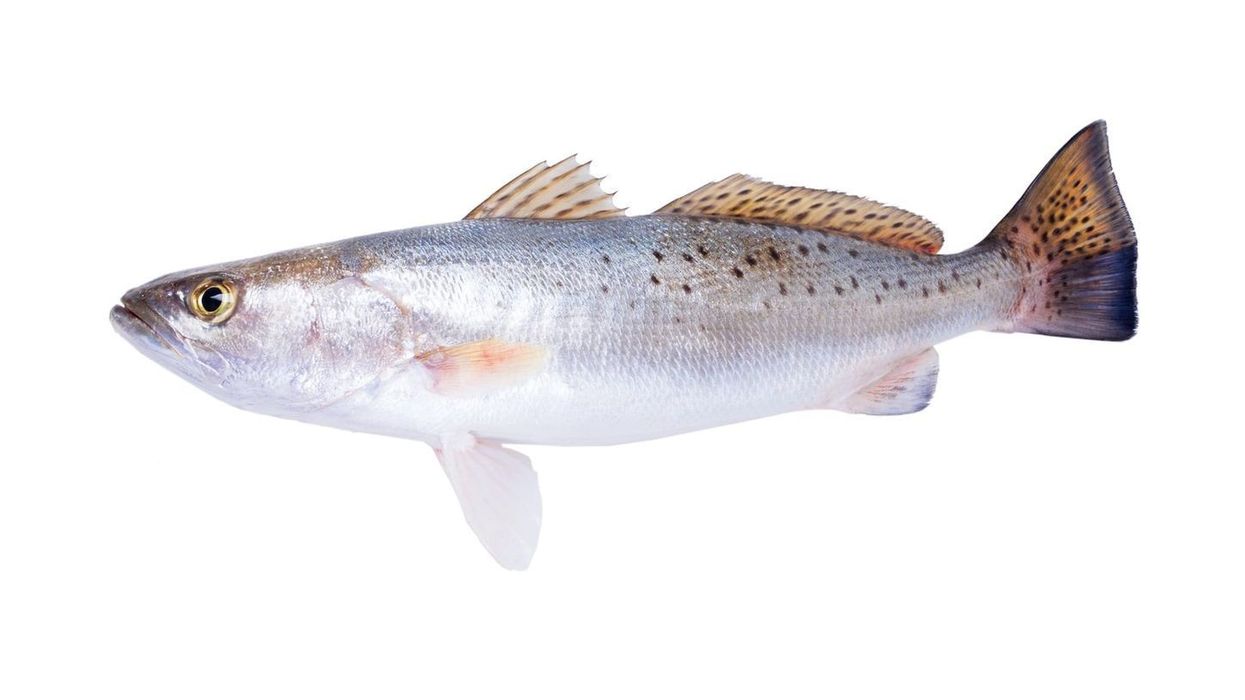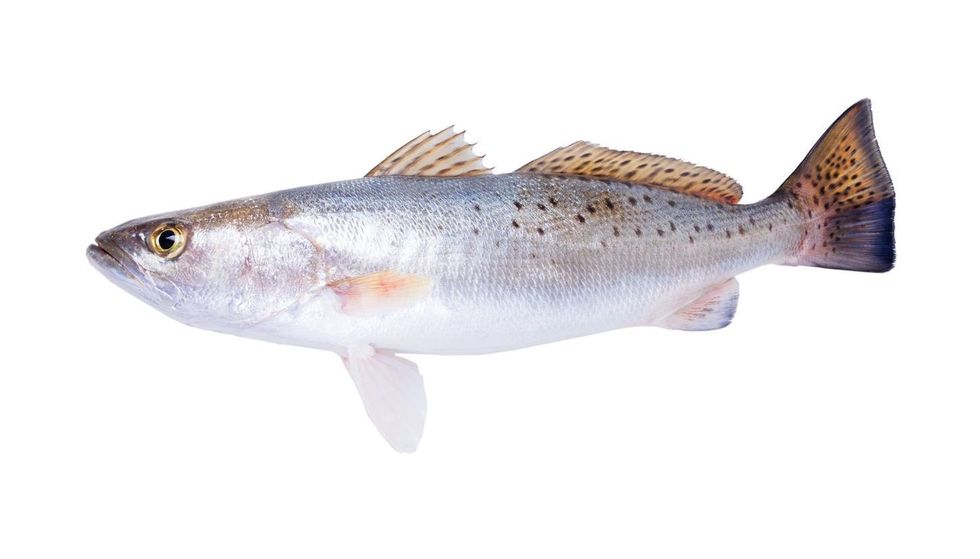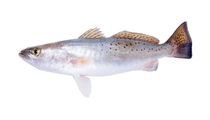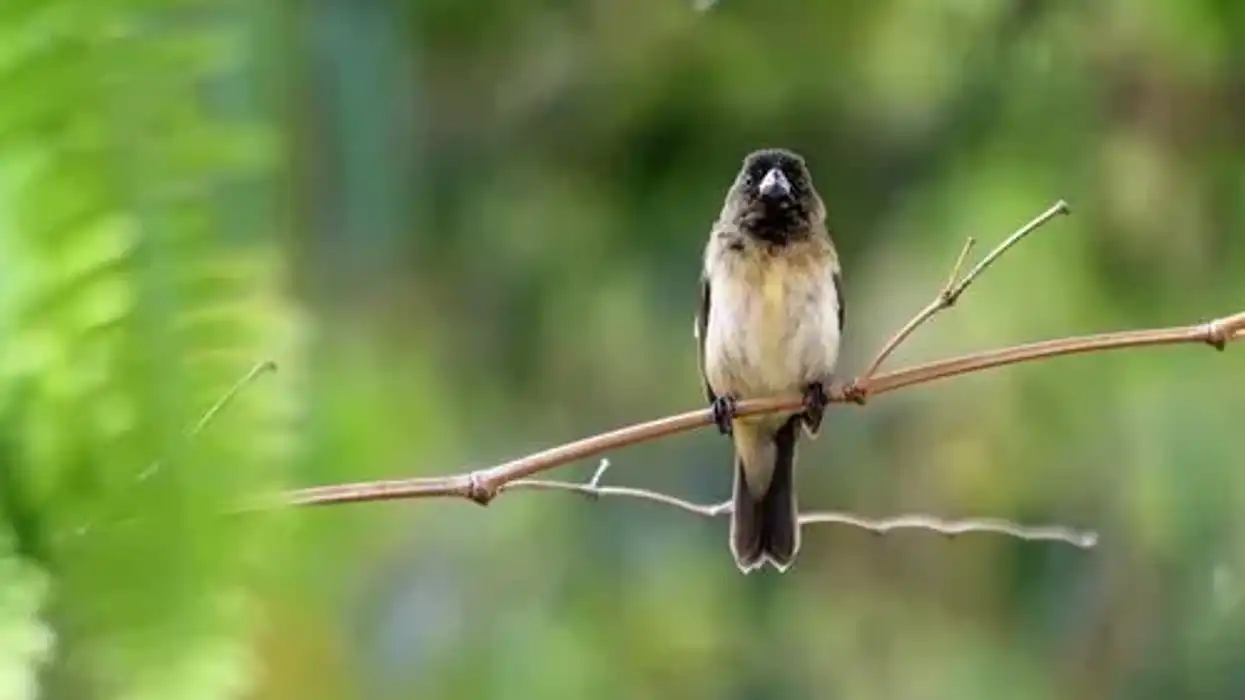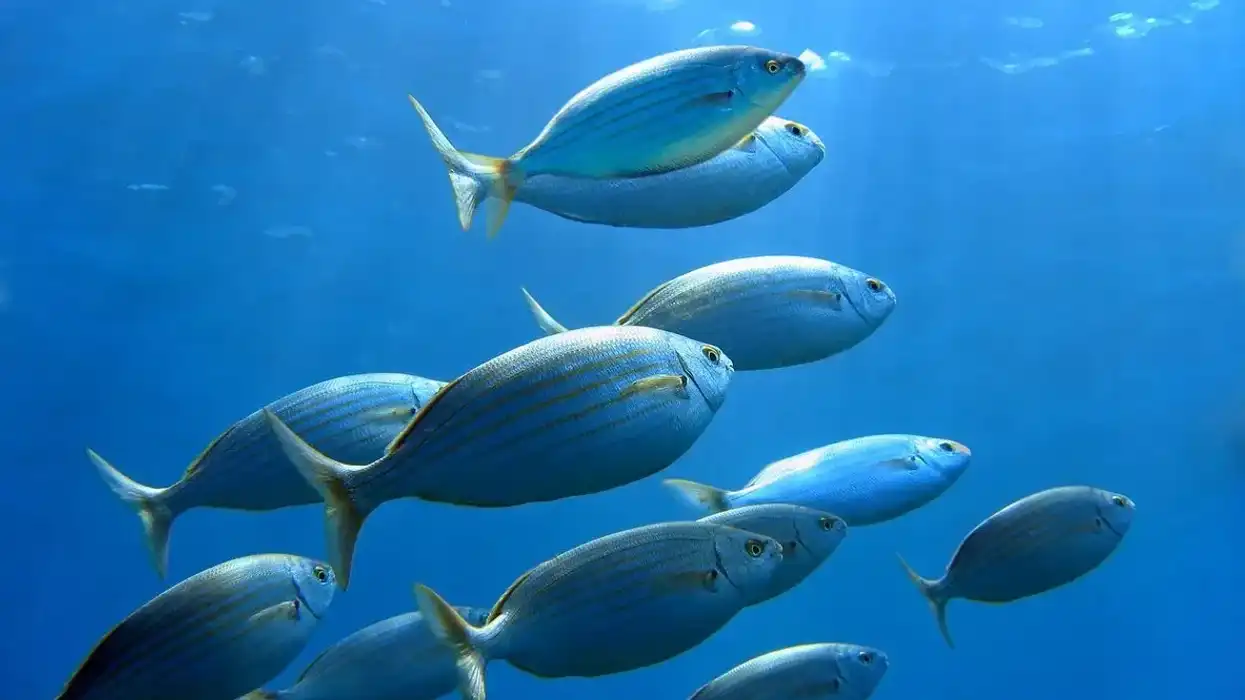Fun Spotted Seatrout Facts For Kids

Are you a fish lover and is interested to know more about one of the most famous fish in the world? We present to you the spotted seatrout which is an extremely edible fish and also has many interesting characteristics.
These fish are usually found in shallow coastal areas as well as deeper grooves and are known to inhabit geographical locations like Louisiana, Mississippi, Florida, Gulf of Mexico, and other similar places.
These fish are slender in shape and have an elongated dorsal fin, while their upper jaw contains canine teeth which help in catching prey and then swallowing it whole. Though this fish swims in deep trenches of the sea, they are also found near the shores.
Females are known to produce a large number of eggs and those numbers sometimes exceed even a hundred thousand.
Nowadays this fish is also farmed in fisheries for the daily production of fish. These fishes are often attacked by other fish and animals and the predators that feed on the spotted seatrouts are Atlantic croaker, barracuda, alligator gar, and tarpon.
If you find our article interesting and informative then check out these lake trout facts and rainbow trout facts.
Spotted Seatrout Interesting Facts
What type of animal is a spotted seatrout?
The spotted seatrout (Cynoscion nebulosus), also known as the speckled trout, is a type of fish that is found in Florida, the Gulf of Mexico, and other similar areas.
What class of animal does a spotted seatrout belong to?
The spotted seatrout belongs to the class of Actinopterygii of the Animalia kingdom.
How many spotted seatrouts are there in the world?
Due to insufficient data and statistics, the exact number of individuals of how many spotted seatrouts are present in the world cannot be known. However, we can make a rough estimate by taking a sneak peek into their conservation status.
These fish are found in abundance and the International Union for Conservation of Nature or the IUCN has listed them as Least Concern with their population steadily on the increase.
Where does a spotted seatrout live?
The spotted seatrout is usually found in brackish waters. These fish tend to be near shallow bays near seas and oceans where there is an abundance of prey for these opportunistic predators.
Geographically, these fish are located majorly in the Western part of the Atlantic ocean. These include areas of South Florida, Massachusetts, Louisiana, Mississippi, and stretching up to the Gulf of Mexico.
What is a spotted seatrout's habitat?
The speckled seatrout is a fish that prefers staying near the shallow bottoms. The primary habitat of these fishes includes estuaries, seagrass beds, brackish waters, and not too deep grass flats of coastal waters. Being marine fishes, these fish can survive in saltwater conditions and thus they can also be found in tide pools.
Who do spotted seatrouts live with?
There is very limited data regarding the habits and the social behavior of these fishes. However, newly born hatchling fries are known to form schools that can consist of almost 50 individuals who then go out looking for favorable feeding spots.
How long does a spotted seatrout live?
The average lifespan of the spotted seatrout is almost around 12 years. The male variants of this species of fish are slow developers and they also have a lesser lifespan in comparison to their female counterparts.
How do they reproduce?
The reproduction of this species of fish is somewhat different from other fishes. A lot of factors come into play during the breeding of these fishes like the salinity of the water, the habitat, and the climate.
The spawning season for this fish occurs from March to September. During this spawning season, males are known to make loud noises that attract females.
All the rituals and mating are observed at night. The perfect spot for breeding lies in shallow spots likes bays and estuaries where the eggs and hatchlings are at less threat to predators.
The mating individuals are known to jump side by side of one another and this behavior is known to be common for all speckled trouts.
The female is known to lay eggs in the range of 15000-1100000 for one breeding event. Proper position of the eggs is necessary as uneven salinity of the water can destroy the eggs.
The eggs tend to hatch almost 18 hours after fertilization. The little hatchlings aka the fry after around 6-8 weeks form a school together that can accommodate up to 50 individuals, goes on their own in the search of food and shelter.
What is their conservation status?
The International Union for Conservation of Nature or the IUCN Red List has listed the spotted seatrout as a species of Least Concern with the population of this species being on the rise.
It is primarily due to the fact that since it is a fish that is consumed by humans, their breeding production is on the rise. However, the speckled trout have encountered many problems in their survival, like the destruction of habitat by humans and climate change.
One of the other major issues is the extensive fishing of this fish for recreation and for food.
Spotted Seatrout Fun Facts
What do spotted seatrouts look like?
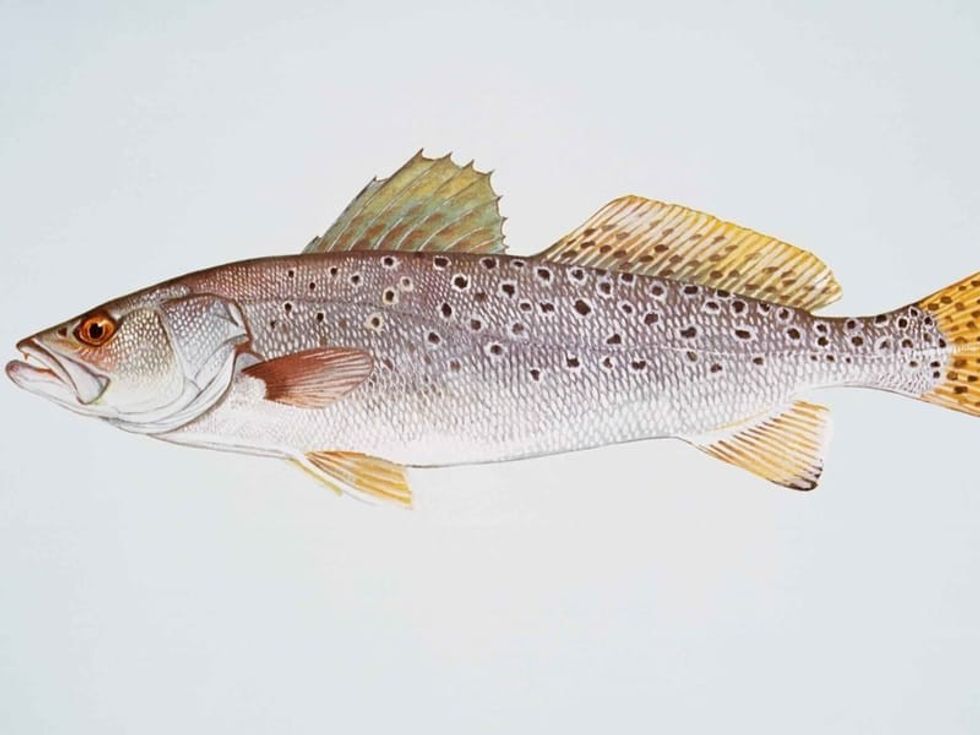
The speckled trout is a long scaly fish that has a pointy snout and a highly compressed body. Other characteristic features of this fish is an elongated body, an oblique moth, and an elevated back.
Unlike other fish of its genus or family, as is evident from its name, the spotted seatrout has numerous black spots or markings that are present all over the upper portion of its body. Different shades of color can be seen in these fishes.
While the ventral side of this fish is white or silvery, the dorsal side is much darker in shade and is dark grey to bluish-grey in color.
They have a soft dorsal fin. The dorsal fin can be bright and has a yellowish tinge to it.
Different sets of teeth are present in the upper and lower jaws of these fishes. The upper jaw has large canine teeth while the lower jaws have a closed set of teeth.
How cute are they?
In general, trouts are not at all good-looking fishes, and the same can be said for the spotted seatrout. However, the speckled markings and a soft fin on this particular fish make it different from other fish.
How do they communicate?
The speckled trout is known to communicate with one another via sounds in the water. During the process the mating, males are known to produce loud sounds which act as a courtship ritual to attract the females.
Moreover, they also communicate by vibration, and visually. They search their prey visually and by vibrations in the water. They also get a good sense of their surroundings (irrespective of being shallow water or deeper channels) by the vibrations they feel around them.
How big is a spotted seatrout?
It has been found out that spotted seatrout grow a maximum total length of 39 in (99 cm). However, the total length of this fish lies approximately in the range of 19-32 in (48-81 cm) in length on average.
The female variants of this species is larger in size in comparison to their male counterparts. These are average-sized fish and are larger in comparison to an average-sized adult trout which has a total length of 16 in.
How fast can a spotted seatrout swim?
There is very limited data and statistics that give us a proper insight into the speed of the speckled trout. However, we can make a rough estimate of the speed of this fish.
They are known to be excellent predators and are very fast swimmers. Thus, we can say like all other species of trout fishes, the spotted seatrout is also an excellent swimmer.
How much does a spotted seatrout weigh?
The weight of the spotted seatrout on average is roughly around 9.7 lb (4.4 kg). It has been found out that the maximum weight which these fishes can achieve is 17.5 lb or (7.9 kg) approximately. Since females of this species are larger in comparison to males, the weight of the female fish is greater than their male counterparts.
What are their male and female names of the species?
Like the majority of fishes, there is no specific name that is ascribed to the males or females of this species. Therefore they are generally referred to by their common name, a male spotted seatrout or a female spotted seatrout.
What would you call a baby spotted seatrout?
Since the spotted seatrout is a fish, the baby spotted seatrout is also defined by its generic name. As all baby fish are known as fry, the baby spotted seatrout is referred to as a spotted seatrout fry.
What do they eat?
The feeding habits of this fish is widely different compared to other fishes. These fish are known to change their diet based on the habitat in which they reside.
They are enormous feeders and are opportunistic predators. When these fish are small they are known to feed on planktivores but once they start growing into an adult their diet changes and they feed on small fishes, worms, larvae, and other similar crustaceans, like, shrimp.
These fish are extremely predatory and are known to ambush their prey. They jump on their prey, and capture them with their large canine-like teeth and then they engulf their food in one complete swallow.
Are they eaten by humans?
Yes. The spotted seatrout is consumed by humans and is treated as a delicacy in many parts of the world. A wide range of dishes are prepared by this particular dish and is enjoyed by a lot of people. These freshwater fishes are usually found in Florida and this particular white-fleshed fish a strong taste and are extremely edible.
Would they make a good pet?
Since they are edible fish and a wide range of dishes use them, it is not advisory to keep them as pets. Moreover, these fish change their habitats based on a wide number of factors like the salinity of the water or the temperature of their habitat.
These factors are extremely difficult to recreate at your home.
Moreover, in many states of the USA, a fishing license is required to even catch this fish. Lastly, these edible fishes are artificially bred to effectively increase their production, as a result overall it will be futile to keep these fish as pets in your home aquarium.
Did you know...
Fish usually grow in a normal format, however, this fish depicts non-linear growth, so their ratio of growth with respect to their weight cannot be determined.
Can you eat spotted seatrout?
This fish is edible and certainly enjoyed by many people. The spotted seatrout is a white-fleshed fish that has a very strong taste. It has wide nutritional values as is common in many freshwater fishes. The strong taste and the texture that this fish provides makes it extremely desirable for humans.
Threats to the spotted seatrout
A wide range of environmental problems affects the proper and sustainable growth of the spotted seatrout. The major threats to this fish is humans and their activities.
Loss of habitat is one such activity and can't find somewhere safe to swim to.
A wide portion of the habitat of these fishes are estuaries and the coastal regions of the western part of the Atlantic Ocean and in places like Louisiana, Mississippi, Florida, and the Gulf of Mexico.
Extremely heavy fishing for food and increase in land development in the coastal areas have led to the destruction of the natural habitat of these fishes and thereby poses direct harm to their life.
Here at Kidadl, we have carefully created lots of interesting family-friendly animal facts for everyone to discover! Learn more about some other fish including brook trout facts, or brown trout facts.
You can even occupy yourself at home by drawing one on our Spotted Seatrout coloring pages.
We Want Your Photos!
More for You
See All
Bachelor of Arts specializing in Journalism and Mass Communication, Postgraduate Diploma in Sports Management

Moumita DuttaBachelor of Arts specializing in Journalism and Mass Communication, Postgraduate Diploma in Sports Management
A content writer and editor with a passion for sports, Moumita has honed her skills in producing compelling match reports and stories about sporting heroes. She holds a degree in Journalism and Mass Communication from the Indian Institute of Social Welfare and Business Management, Calcutta University, alongside a postgraduate diploma in Sports Management.
Bachelor of Journalism and Mass Communication

Ankit ShindeBachelor of Journalism and Mass Communication
Ankit is a Journalism and Mass Media graduate from the University of Mumbai. With experience in SEO, blog and article writing, and fiction writing, he is a versatile writer and content creator. In his free time, Ankit enjoys reading, writing, and listening to music.
Disclaimer
1) Kidadl is independent and to make our service free to you the reader we are supported by advertising. We hope you love our recommendations for products and services! What we suggest is selected independently by the Kidadl team. If you purchase using the Buy Now button we may earn a small commission. This does not influence our choices. Prices are correct and items are available at the time the article was published but we cannot guarantee that on the time of reading. Please note that Kidadl is a participant in the Amazon Services LLC Associates Program, an affiliate advertising program designed to provide a means for sites to earn advertising fees by advertising and linking to Amazon. We also link to other websites, but are not responsible for their content.
2) At Kidadl, we strive to recommend the very best activities and events. We will always aim to give you accurate information at the date of publication - however, information does change, so it’s important you do your own research, double-check and make the decision that is right for your family. We recognise that not all activities and ideas are appropriate for all children and families or in all circumstances. Our recommended activities are based on age but these are a guide. We recommend that these ideas are used as inspiration, that ideas are undertaken with appropriate adult supervision, and that each adult uses their own discretion and knowledge of their children to consider the safety and suitability. Kidadl cannot accept liability for the execution of these ideas, and parental supervision is advised at all times, as safety is paramount. Anyone using the information provided by Kidadl does so at their own risk and we can not accept liability if things go wrong.
3) Because we are an educational resource, we have quotes and facts about a range of historical and modern figures. We do not endorse the actions of or rhetoric of all the people included in these collections, but we think they are important for growing minds to learn about under the guidance of parents or guardians.
